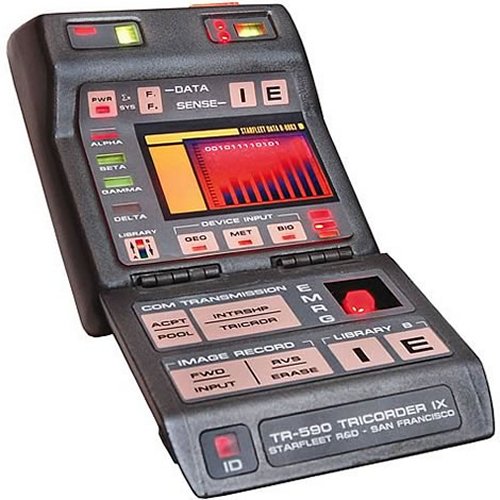The RI coodinator is a large radio unit with signal boosters. It can be keyed to either special helmets work by a team or by simple transmitters. The home piece of equipment, which is the size of a desktop computer, calculates on a hud the locations of each team member. If they wear the specalized helmets, it can also transmit this hud to the plastic of each helmet, and can also display what's in the field of view of each agent to another agent or to the main unit. It also keeps the team in contact with each other via radio frequency. The home unit uses a random number generator to manage the changing of frequencies to help overcome anyone else listening in.
More advanced version contain ultrasound mappers on the helmets so it can construct a kind of auto-map in the HUD. If the building plans can be recieved and downloaded in digital form it can also overlay such maps for the team to use. If the headware can be equipped to detect other life forms (like some cyberware has), they can be displayed on the HUD also as a warning to the runners. Each of these "upgrades" can be quite costly.
This equipment is suseptable to signal jamming, so signal boosters may be needed.
De-Magnitizer:
A large block which goes onto a mag-lock door and forces it open. Unlike the sequencer or the scramblers, this attacks the magnetic locking mechanism, which either disables the magnatism or reverses it- forcing the door to swing open. On the plus side, it's very quick- it takes 1 full combat round for it to work. Make a rating test of the unit vs the door, one net success and it works. The downside is that it almost always triggers an alarm, since it doesn't bypass- it overpowers, as if you had ripped the door off yourself. The unit takes 3 complex actions to attach to a lock and 1 to remove once it is activated. Great for getting out in a hurry, not great for getting in secretly. The technical equivelant of breaking a window.
Key-Blaster:
One of the reasons they made maglocks is because of the keyblaster. It's a small device that shoots pressurized air into a mechanical lock, pushing the bolts up so that the lock can be turned. Roll the rating of the blaster against the rating of the lock, if successful (with one success) it allows you to unlock the door. Most mechanical locks are of low rating. In any case, it takes only a complex action to use.

Tricorder
A tricorder is a small device, about the size of a cell phone. When opened it can scan an area about 3 meters around itself, and apply relevant knowledge skills, which it displays on the screen. The rating of the tricorder determines the ranks in a knowledge skill that it has. Many knowledge skills include knowledge:biotech (for scanning for diseases, cyberware, etc- common in medical models), knowledge: metahumanity (for scanning people to determine racial origins or mutations, etc), knowledge structural (for determining building weak points, etc) or knowledge weapons (for identifying weapons, explosives) or knowledge electronics (for identifying maglocks and providing instructions for disarming).
The tricorder rolls its rating against the rating of any machine it scans, (or against the disguise of any person it's identifying), and if successful it identifies the creature/device and rolls its knowledge checks. A tricorder can hold up to 2x its ratings in knowledge skills, to be divvyed up in any way amongst knowledge skill ranks. It also provides 6 ranks in instruction for giving directions on how to construct (or destroy/override, etc) a given device it identifies.
Camera Loop
This piece of equipment searches the camera for images of non-movement, and attempts to loop that image to the camera's vision, providing the illusion that no one is ever in the hall, despite what the camera actually sees. Installing this requires that the person get under the camera, and attach it with a B/R electronics check, TN = rating of the camera, base time 15 minutes with extra successes decreasing time.
Afterwards the loop seraches for an empty image and plays it repeatedly. It makes an opposed test against the camera. If the camera wins, it records what's actually there, but displays the fake image. If the loop wins, the camera records the blank hallway too.
While this is not fool-proof (if the hall SHOULD be full, it will still show as empty, and any image of a clock or shadows might be a giveaway), this is an effective way of disabling a camera so that the guards watching don't know what's going on. (Of course, if the immage SUDDENLY goes blank that could be a problem too!)
No comments:
Post a Comment